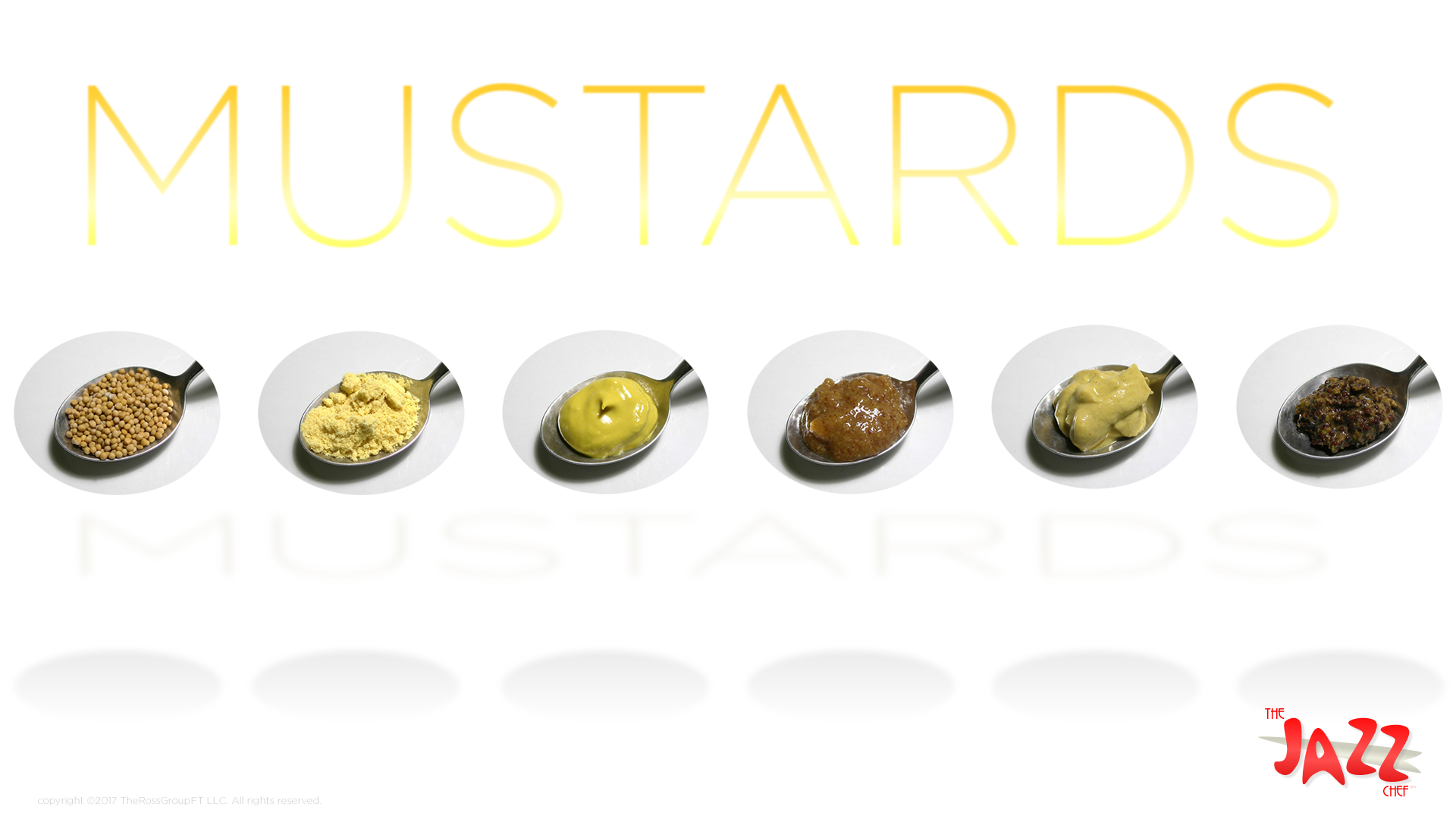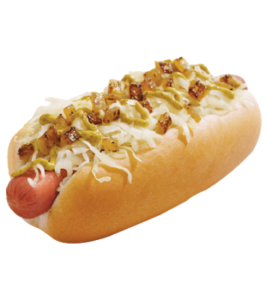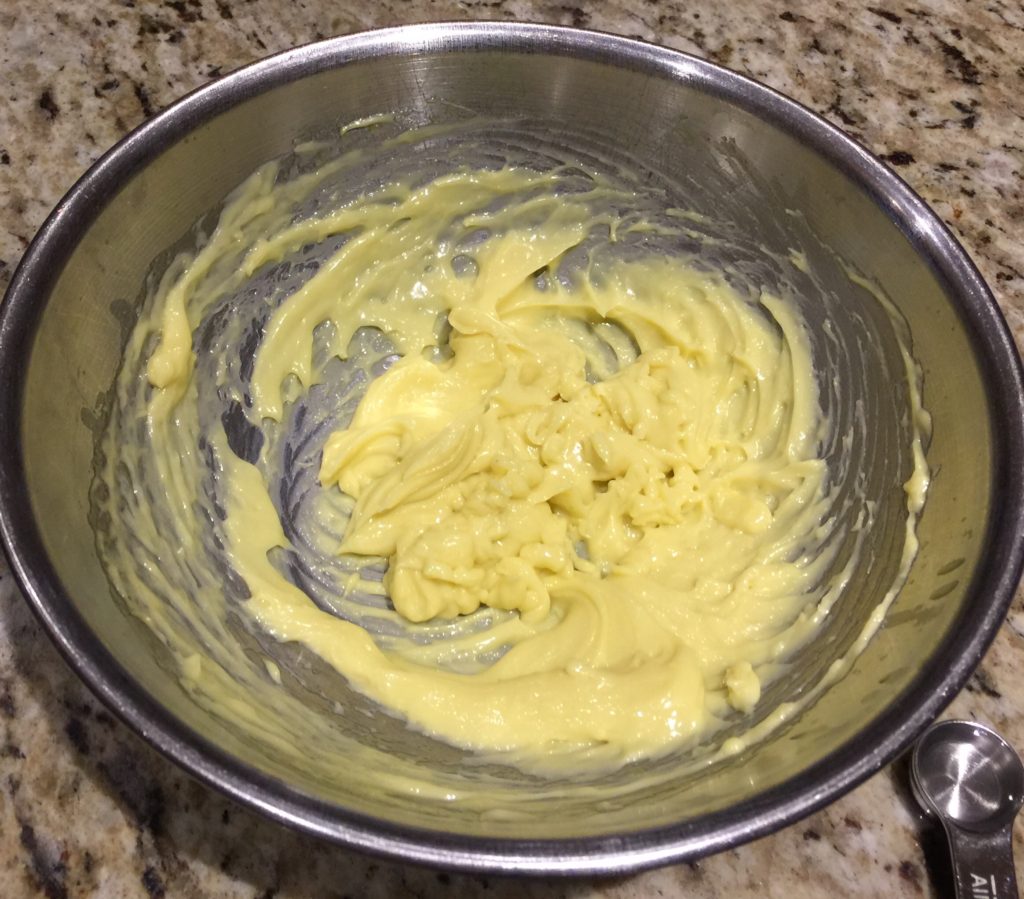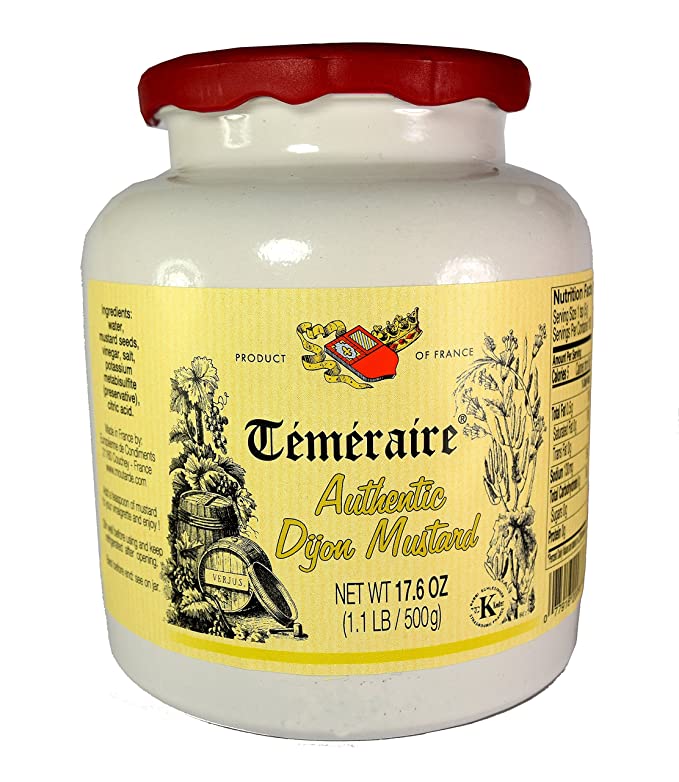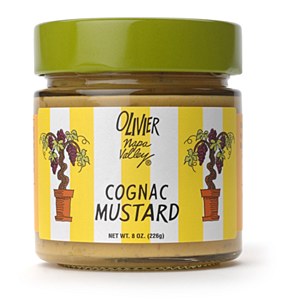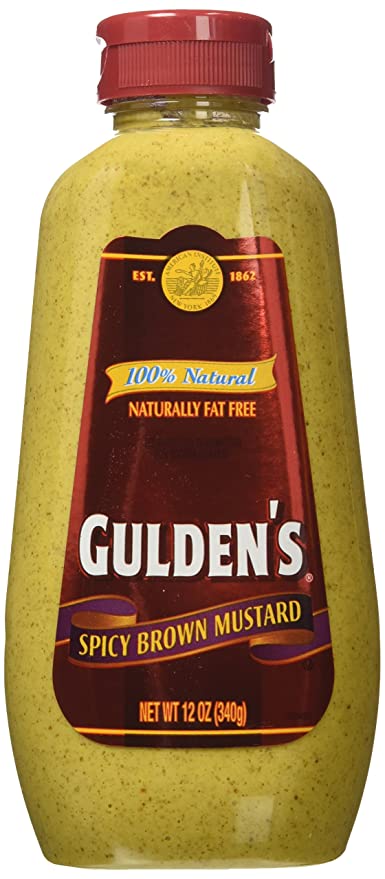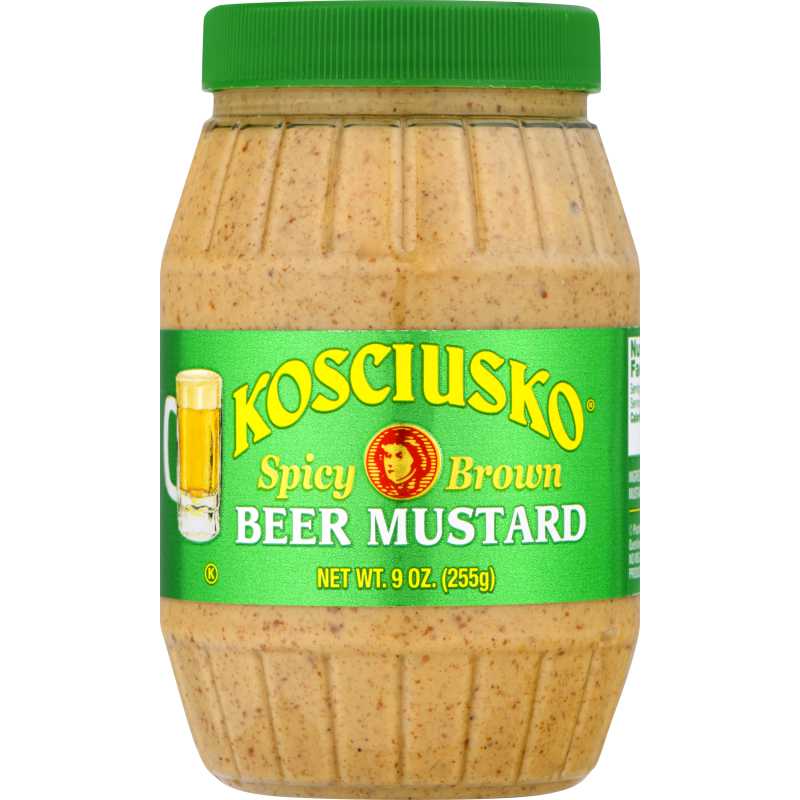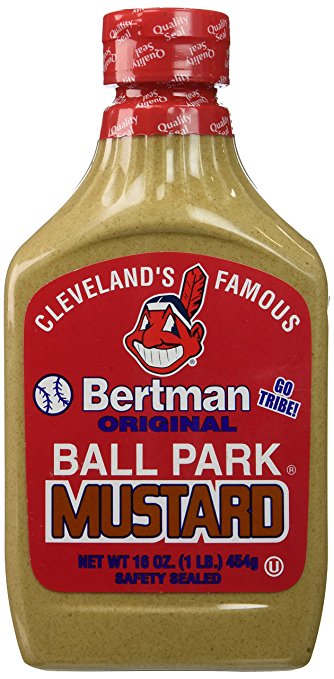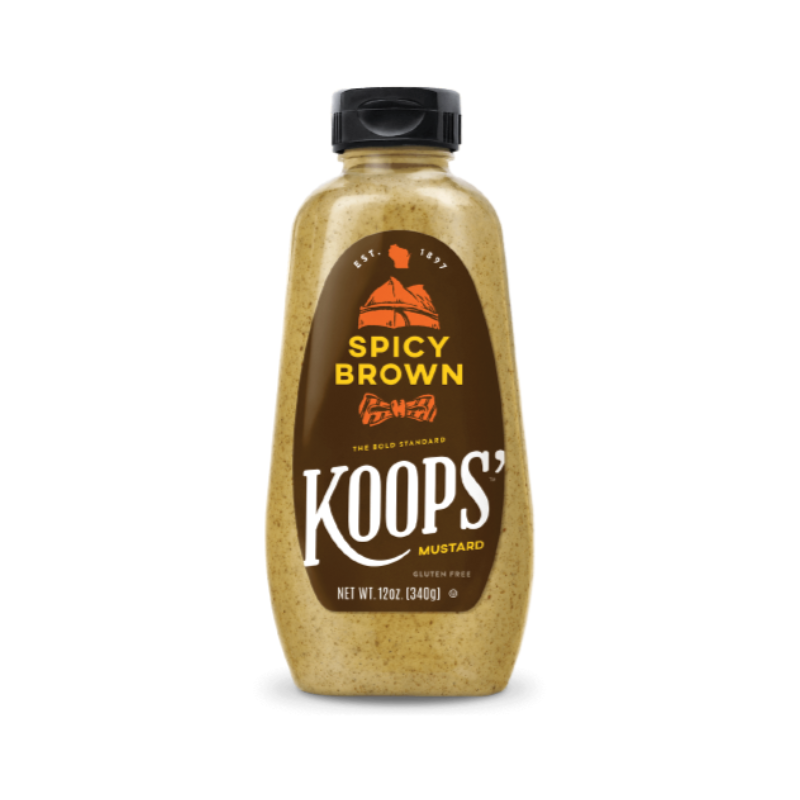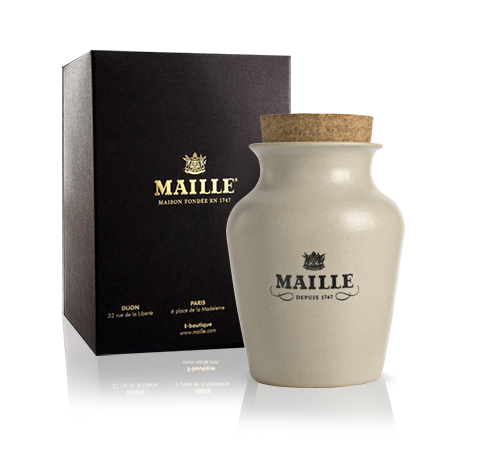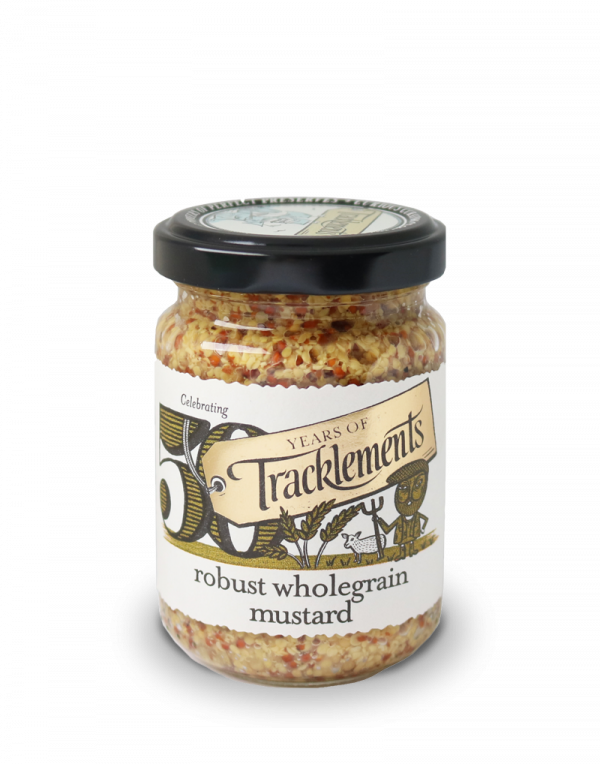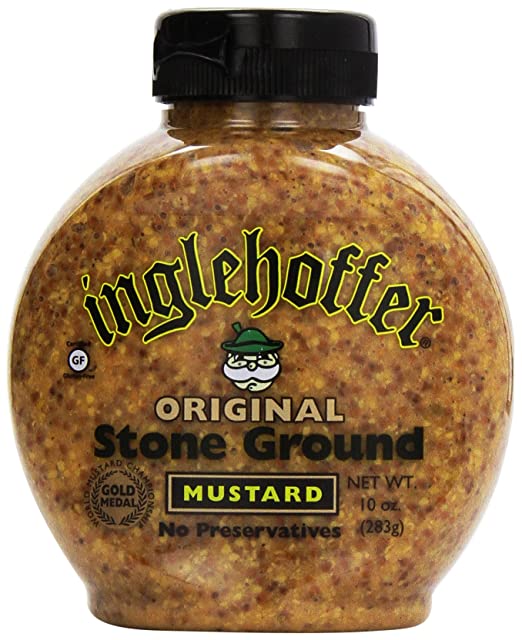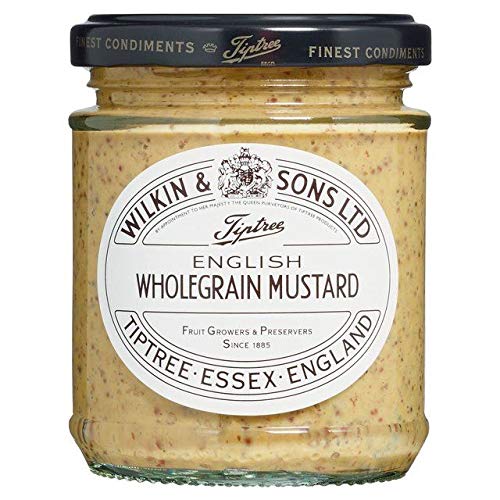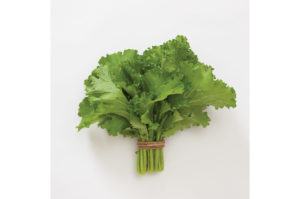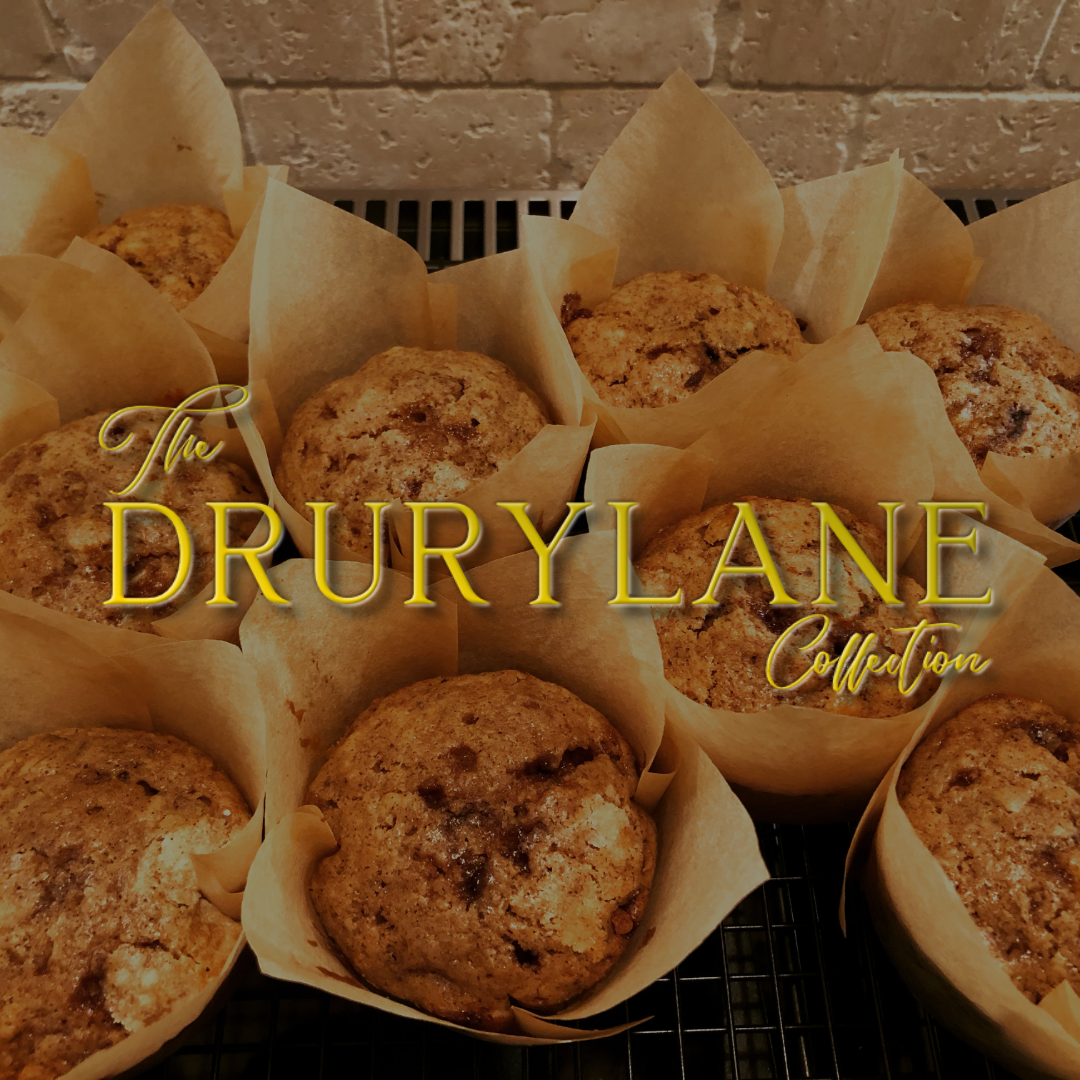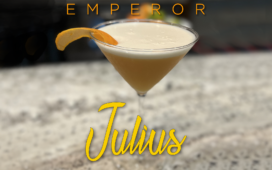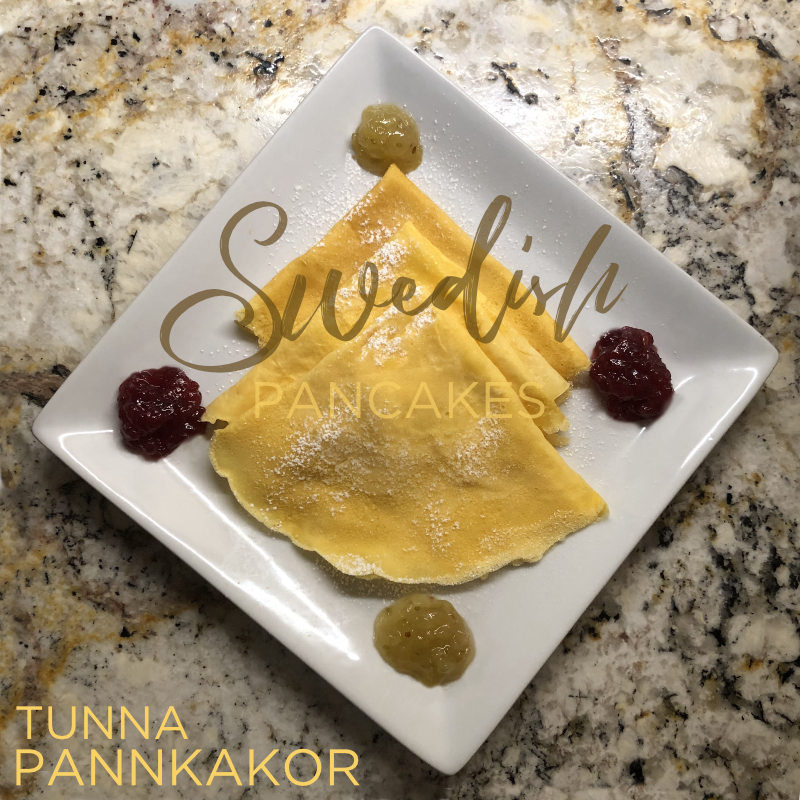UPDATED 04.20.20
The world is mad about mustard! More and more shelf space is being made for the craft mustard revival. We’re learning a lot more about how the rest of the world uses the plant, the seeds, and even the oil, to bring the magic of mustard to more of our home cuisine.
The Magical Mystical Mustard Tour
I’m going to re-connect you to your mustard jones. Heck, even if you never liked the big box brands, I am going to give you great reasons to discover the real magic of mustard, mustard greens, and the magic of mustard oil!
Mustard finds its way into some crazy places. Some of the best mac n’ cheese that you’ve ever had probably has a splash of mustard in it. Potato salad, great salmon, marinades for steaks, as well as stir fried Chinese green beans and sausage. Even one of my tuna salad recipes is powered up with a little of the yellow magic!
Mustard Tribalism
Mustards, possibly because of their easy portability, and long shelf-life, are a huge part of the daily diet of humans around the world. Frequently, both the condiment, and the seeds themselves, can be a source of national, or regional, cultural pride.
Woven into our childhoods, through picnics, sporting events, or our first fond memories of sandwiches, burgers, sausages, or hot dogs, we culturally identify with particular brands/types of mustard that have been a part of our upbringing.
When I was a kid, The L.A. Dodgers signature hot dog, the Dodger Dog, were served up with French’s at the boiled dog stands, but the thing was to find the few grilled hot dog stands, sporting the coveted Gulden’s spicy brown mustard.
Cleveland Indians fans swear by Bertman’s Ball Park.
Chefs in New Orleans make Zatarain’s Spicy Creole Mustard a staple,
It’s still a treat, or a point of regional pride, outside of your home pantry, or town, to find your family fave sitting on a table, or counter of a restaurant.
A Cultural Obsession
Mustard is a cultural obsession, not just culinarily, but also in art, film and television, literature, herbal medicine, and even in Earth’s orbit.
NASA launched mustard plants into space aboard the International Space Station (ISS) in 2017. Mizuna mustard greens are still growing in their demonstration systems.
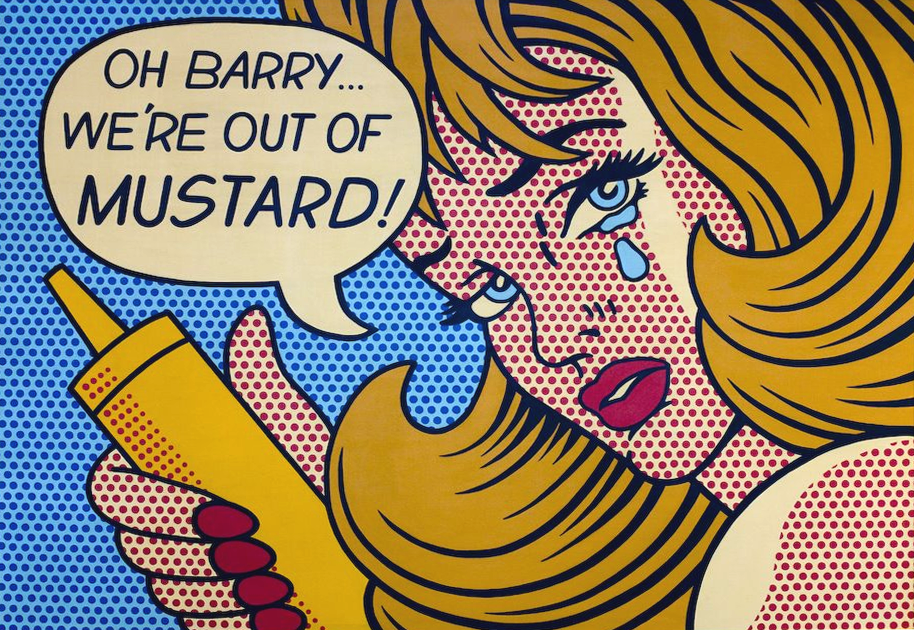
There is very little truth in advertising in the mustard game. Thanks to Grey Poupon, few of the wine mustards called “Dijon” available for sale are from Dijon, France, which lost control of its name and never got it back. The stuff available on North American shelves is mostly made in Canada and, soon, Michigan?
Mon dieu!
A Long Part of Human History
Mustard was one of the earliest grown crops. The word “mustard” is a hybrid of two Latin words, “mustum” and “ardens” meaning “burning must.” Ancient mustards were prepared with must, unfermented grape juice.
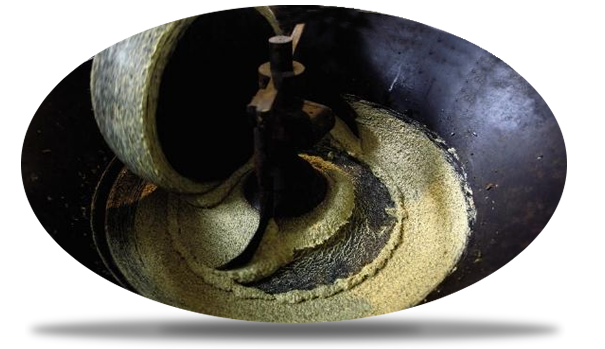
The seed, and the plant, have traveled well with man’s movement around the globe. Native to more temperate areas in Europe, it was popularized by the ancient Greek, then Roman empires. It has been traded, and cultivated, commonly for thousands of years, spreading, with societies that traveled, and explored, all over the world.
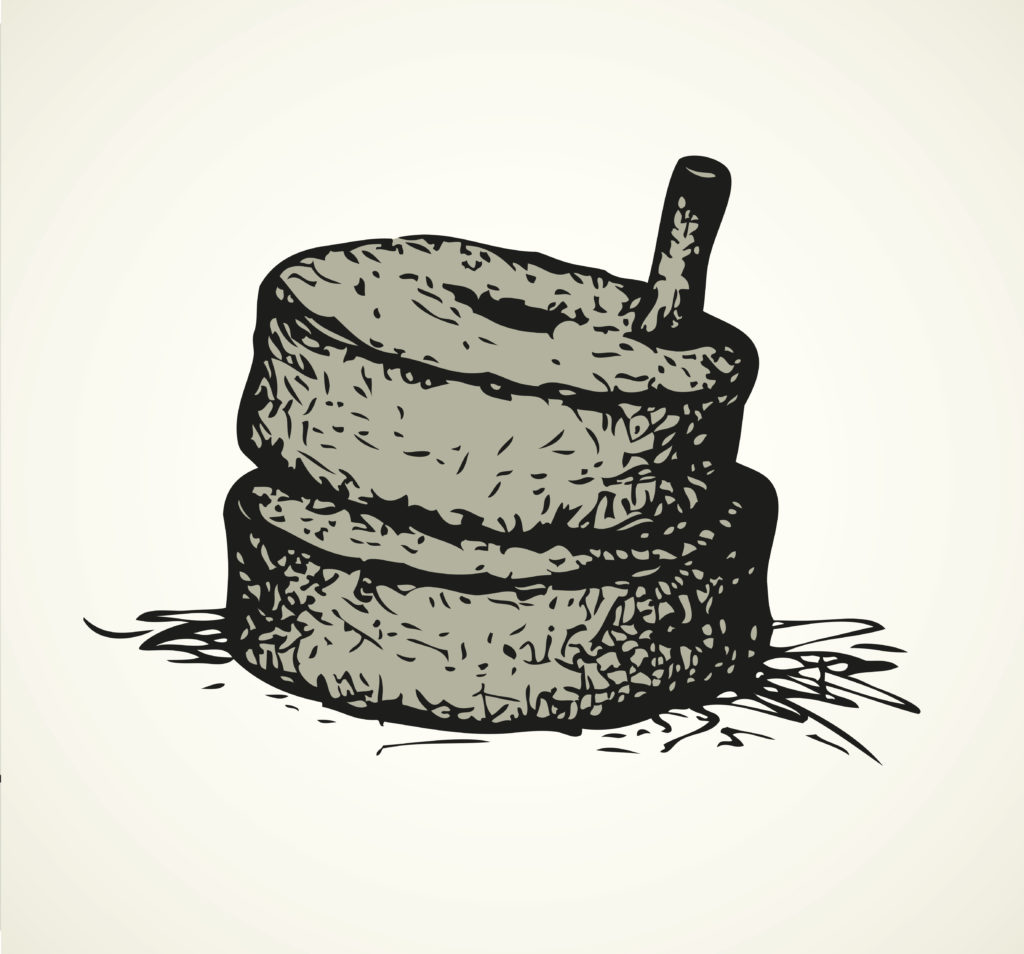
Table mustard, as a condiment, traces its roots back to Gaul (500 BCE to 100 BCE). The Romans imported the custom of using table mustard sometime around their takeover of Gaul in 100 BCE. De Re Coquinaria by Apicius (5th century AD), the earliest known cookbook, has a recipe for prepared mustard.
In the reign of Charlemagne (768-814), mustard became commonly planted across France, spread to Germany, and then onward to England.
The Renaissance saw mustard proliferate as a part of the explosion of using spices in cooking in Europe. In China and India, which were trading spices outbound, mustard seeds became an inbound spice revelation from the exotic North.
In the prepared foods, the 19th century was the Golden Age of Mustard. The city of Dijon, in France, became famous for mustards with added wines and vinegars. Their grinding equipment experimented with different techniques.
Today, mustard plants can be found across Europe, North America, North Africa, and Asia. Grown in more than twenty-one countries, some table mustards, like Charroux, can trace their origins back nearly a thousand years!
Brain-Pleasing Chemistry
There is a reason that we crave mustard: It is used in so many dishes, all over the world, because its chemistry pleases our brains. The compounds in it are beneficial to our health.
Mustard is a cruciferous vegetable from the brassica family, which includes cabbage, Brussels sprouts, and broccoli.
Its leaves can be eaten as a vegetable, in salads, or cooked. It is the seeds, though, that are the stuff, when ground, of legendary table mustard, dry prepared mustard powders, seasonings, and magnificent mustard oil.
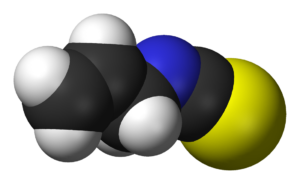
The mustard seed is full of naturally occurring phytochemicals called isothiocyanates (eye-so-thee-oh-sigh-ah-nates) or mustard oils. Each seed is about one-third oil, and the oil flavor variations are what determine the seed’s overall flavoring.
Taste & Nutrition
Mustard is a pungent flavor, like onions or garlic. It has a strong taste/smell that we find appealing.
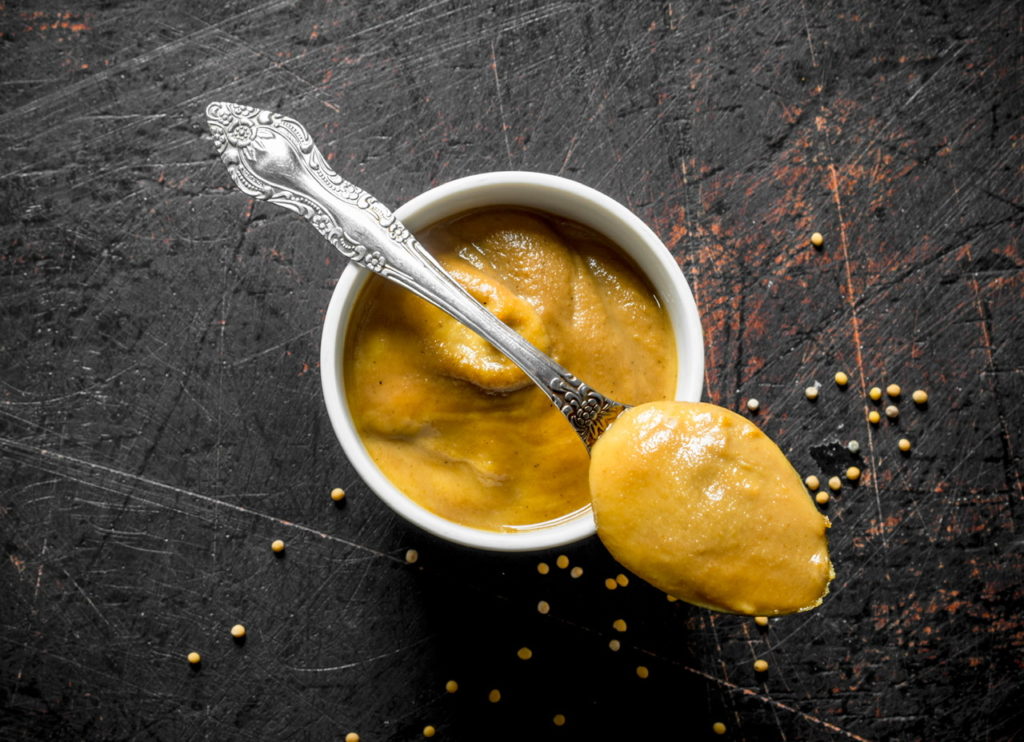
It is a core of our good health: Mustard oils contain omega-3 fatty acids, proteins, vitamin A, and essential nutrients including varying amounts of calcium, iron, manganese, magnesium, niacin, phosphorus, selenium and zinc.
Mustard has traditionally been an important preservative in foods: It inhibits mold growth, and bacterial formations of yeast, e.coli, listeria, and many food pathogens.
Mustard is also a great antioxidant!
Depending upon how they are processed, whole grain mustards are a minor source of dietary fiber.
Mustard Seed 101
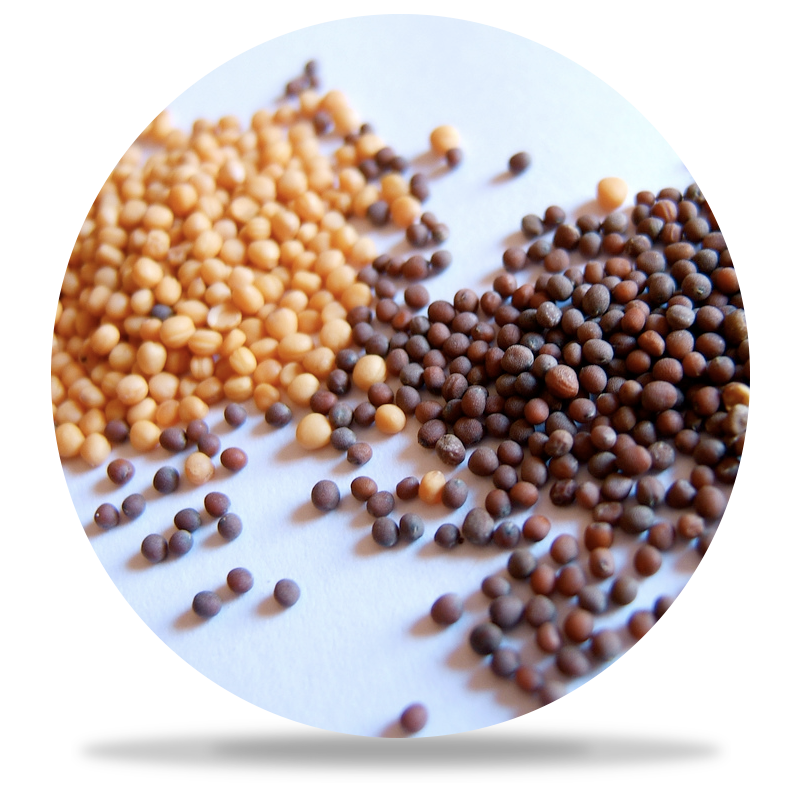
There are four basic kinds of mustard seeds:
- Yellow: (brassica hirta) Small yellow flowers producing seeds round and yellow, are mild and flavorful, and the most common form. The flavor comes largely from p-hydroxylbenzyl. It loses that mild pungency pretty quickly, as that natural chemical in the seed dissipates after only a couple of weeks;
- Brown/Asian (brassica juncea) – These are the seeds that have a bit of horseradish-like bite. Their earthy flavor is found in wine mustards, and in blends, like a spicy brown, or “ballpark” mustard.
- Black: (brassica nigra) Small yellow flowers contain a more bitter glucoside, sinigrin, the bitter compound also found in Brussels sprouts, rabe, and broccoli. They yield hot, rich, round smooth red seeds that turn black. They’re the bitter that goes up your nose if it’s too strong!
- White (sinapis alba) With flowers which are larger, its pale yellow seed is notably less pungent and more bitter.
As a condiment, the fusion of some base vinegar, salt, and mustard seed imparts big flavor. The taste is used to counterpoint the often fatty, heavy foods with which it is served. Mustard provides contrast to corned beef. It blends with other strong flavors like onions or oily seafood. Mustard was served with sardines in early American cuisine in the Northeast. In Germany, it was combined with cabbage as sauerkraut, part of their probiotics used to digest heavy meats.
As an oil, it is used in India, Nepal, and parts of Indonesia and Asia for its fragrant, pungent characteristics that it imparts to fried foods.
The Healthy Hot Dog?
So a New York hot dog with mustard, onions and kraut makes sense.
The supporting ingredients transform the tubes of emulsified meats into a more digestible, nutrient-rich meal that has essential vitamins, dietary fiber.
The sauerkraut, is actually probiotic, which helps you digest the richness of the hot dog a bit better.
Passion for Pungence
Yet mustard is more than that. Prepared mustard, mustard oils, and mustard greens embody our passion for the pungent in our cuisine.
For nearly two-hundred years, until the Industrial Revolution, mustards, mixed with a couple of other herbs, were used as an aphrodisiac!
The Mustard Revolution
Just like wines, spirits, olive oils, and other large food industries, mustard is moving out of the shadows of the tourist traps selling quaint condiments as mementos of regional cuisine, and pushing its way into the front lines of supermarket shelves and pop purveyors like Amazon, which tracks over 1900 types of the condiment over more than 1000 brands!
There’s a mustard museum, several mustard competitions globally, and, because you knew that there had to be one, a National Mustard Day.
Very Versatile
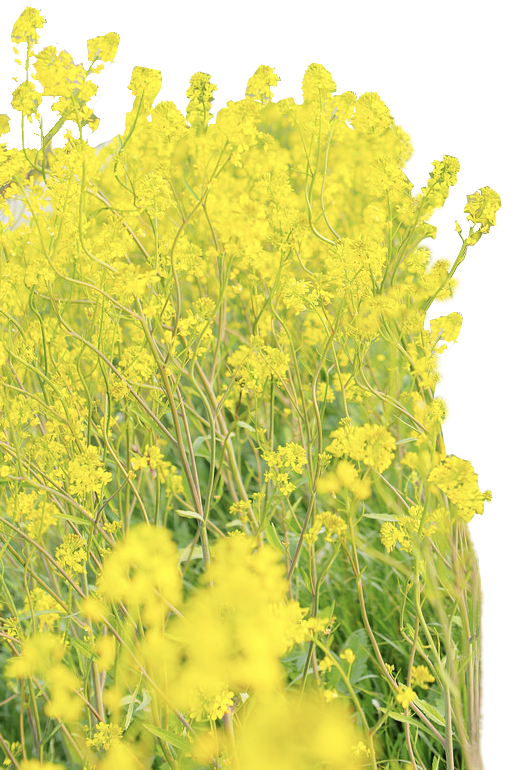
Mustard is a very versatile condiment. It comes in all shapes, sizes and forms:
- Beer/Wine/Spirits
- Brown
- Chinese
- Chocolate
- Coffee
- Curry
- Cracked
- Fruits/Citrus
- Garlic/Onion
- Herbed
- Honey/Maple/Sweet
- Horseradish
- Nut
- Peppers
- Small Batch/Craft
- Smoked/Smoky
- Stone Ground
- Spicy Brown (Deli)
- Strong
- Truffles
- Vinegars
The Many Manifestations of Mustard
There is no such thing as one-mustard-fits-all. At home, it is best to have at least two go-to mustards available, and maybe a fun novelty mustard or two, although you can usually make those yourself if you start with a good base mustard and riff on it on your own.
- Prepared mustard;
- Dried mustard;
- Mustard Oil;
- Mustard seeds;
- Mustard salts;
- Mustard greens.
One plant with so many uses, that we must explore them all, because, at one time or another, they will come into play in your home cuisine.
Quality Counts.
Quality and authenticity in your cooking starts with quality and authentic products.
Mass produced mustard products are not always evil, although a few of the major brands, laden with additives to make them cheaper and more addictive, like sugar, or High Fructose Corn Syrup (HFCS), need to come off your shopping list.
Amp the A-Game
We amp up our game in the kitchen when we learn all of the flavor, and texture, options that let us riff recipes at home. The mustard plant, in all of its wonderful ways, offers us a lot of opportunity to create culinarily.
Condiment Creativity
For Mustard, the condiment, I want you to think beyond obvious objects like sandwiches and pretzels, although a great mustard can change your game on both.
I put a dab of Creole Mustard into my Ragin’ Cajun potato salad to work with some fresh scallion greens to broaden the flavor palette from heavy potatoes, without going to a sweet, pickled relish.
No good mayo, or aioli, IMHO, is worthwhile without a drop or two of a good wine mustard.
Condiment mustards can be used on dozens of dishes, from skillet potatoes, to chicken and pork dishes, to a dill honey mustard to dab under my citrus-infused house-cured gravlax.
Mustard Oil Out-Wasabis Wasabi
Mustard is not just a seed, or a condiment. Mustard oil, often mislabeled as “not for consumption,” due to lobbying efforts of Big Mustard, is, in moderation, a revelation in cooking where you need a little of that pungency, but not the seeds, or the cloudiness of the condiment mustards.
My Indian, and Pakistani chefs will howl at me if I don’t mention that they fry in Mustard oil, as well. It’s not a bad flavorant, as a frying oil, at all. It has a smoke point of 249°c / 480°F, which makes it ideal as a durable oil. My only concern is data that shows that the higher concentrations of certain compounds can become too much of a good thing, and may become toxic, with regular consumption.
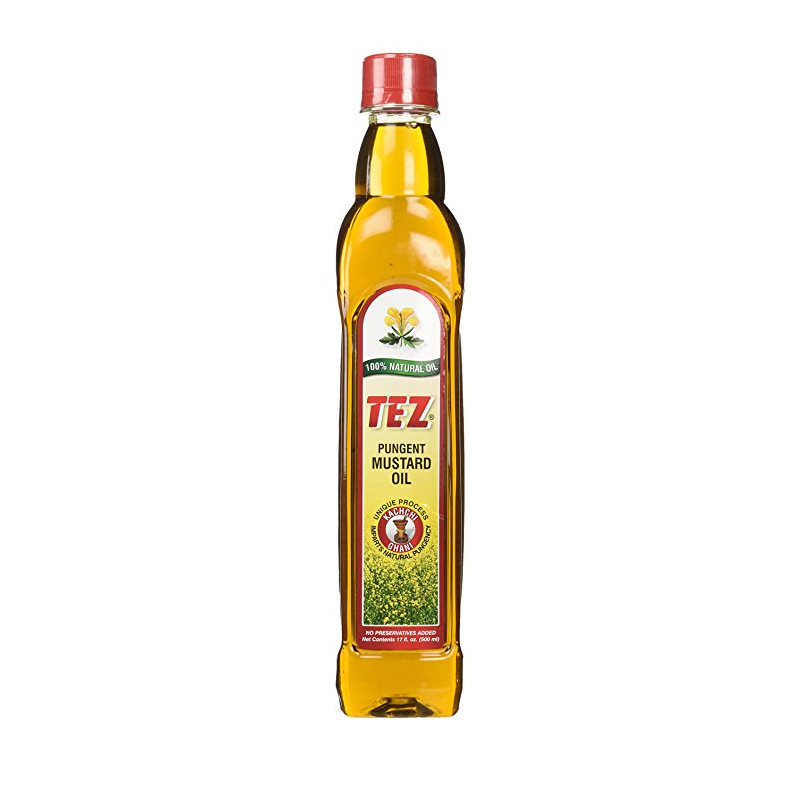
Chefs in the USA are discovering its wasabi-like allure, using it in more sparing amounts than Indians traditionally do, dressing up salads and adding a little pop to meats, fish, whatever at some of the nation’s top restaurants. Until you master the flavor, use in moderation, with other oils, is your best friend.
Mustard Gets Salty
Infused salts are the rage at kitchen stores, and spice merchants, in North America. Salts with mustard are growing in popularity. Salt is a major fluid exchanger in our bodies. That is why it amplifies tastes in your food. The salts help open up the essential oils in foods, the baseline of “flavor,” and blast them into your tongue, and tastebuds, like the speakers at a Rolling Stones concert.
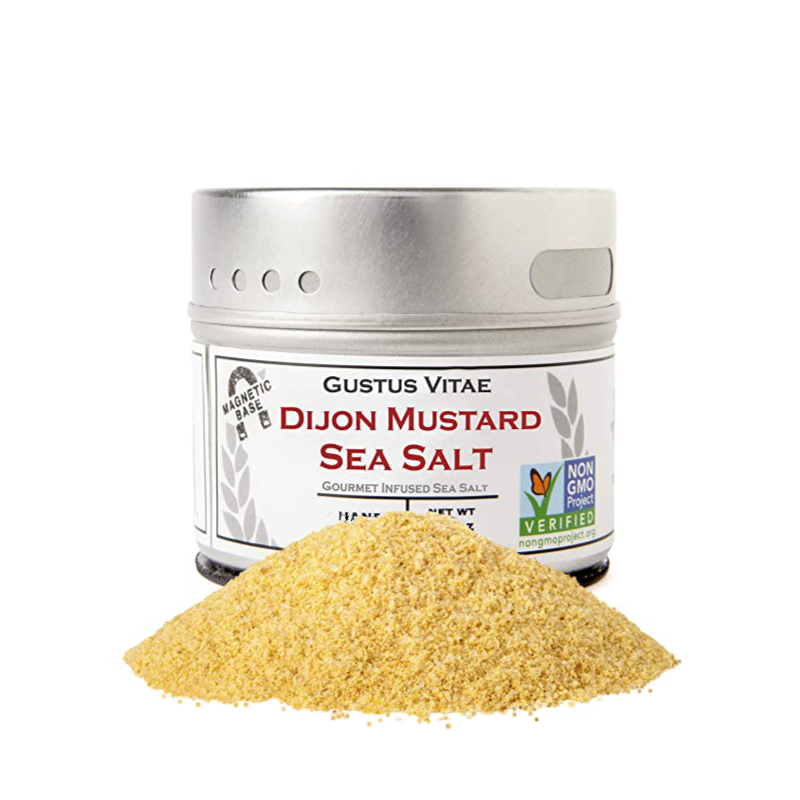
Thus far, the only mustard salt that I’m impressed with comes from Gustus Vitae. Their Dijon mustard infused salt is well integrated. I sprinkle a little of it on as a finish for scallops seared in ghee that have a little onion powder, and herbs de Provence coating. It provides the salty kick, a pretty bit of yellow on the dark scallop surface, and gives you more direct access to the mustard’s flavor, and pungency.
Mean Greens Antioxidant Superfood Machine
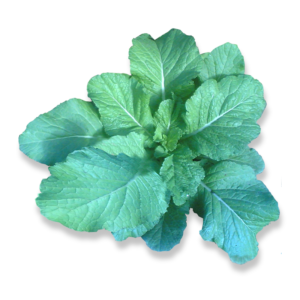
Once considered a foodstuff of African-American soul cuisine, and Cajun cooking, mustard greens are being rediscovered by the rest of the world for their health benefits. They are now classified as a superfood.
Thanks to that news, both the organic and vegan culinary communities embraced them.
Their pungent warmth has featured mustard greens at some of the nation’s top restaurants.
You can find them as a side, in salads, a vegetable in a soup, as part of more complex dishes like stuffing for empanadas, and as an ingredient to a very up-tempo spanakopita, the Greek spinach pie. They make a super Sichuan stir fry!
Mustard is a dynamic flavor that gives your improv plenty of pungent pop!
Your Essential Condiments
What mustards, ground as a condiment, deserve a place in your pantry, or refrigerator? Ones that are kitchen workhorses, and can find their way into your improvisational cooking, in places that you might not have used mustard before.
Mustards made with quality wines, or with a particular stone-grind, and craftsmanship, that dress up everything from a sandwich, or hot dog, to a sauce for a steak, or a shrimp dish, are the way to go.
The Many Unnecessary Mustard Variations
Mustards are like pancake mixes. There are way too many of them. Thousands, actually.
I will hear from several of you because I’ve left out a lot of your fave mustard mixes: Honey, Beer, Jalapeño, Tandoori, Tarragon and a bunch of others. There are a lot of prepared mustards out there with all kinds of gimmicks.
I would give you this advice: Save the money.
Why, oh why, do you need another jar of the same stuff, cluttering up your pantry, or refrigerator, that limits how you can use it?
You’re paying way too much for improvisations that you can do yourself, with a good aromata, and basic staple ingredients in your kitchen.
How much “Honey BBQ Bacon Brown Supreme” do you want to keep stacked up in your refirigerator?
If you want maple mustard, take some good maple syrup, and a great stone-ground mustard and mix up what you need, that day, yourself. Add some fresh jalapeño, or some jalapeño powder, to the mustard of choice to get that variety, if that rocks your boat.
Make up your own! Bourbon, beer or whatever spirit you like, do that. Mustards are a place for the home chef to be fearless, and to riff your own variations. Heck, you get a great one, sell it yourself!
Lower the Flag on Big Brands? But, of course…
The bigger the brand, the more malfunctioning the mustard.
Mustard seeds have soared up in price in recent years. The mustard magnates have responded by adding more filler, and less seed, to stave off bottom-line bleed.
Just like factory eggs, people buy labels, not tastes. You remember an old flavor, so, as you buy newer, oftentimes more inferior product, in the same containers, you slowly adjust your palates to the taste.
No one complains.
Yet, after a while, we notice that something is missing. Something we want back. Mustard without toxic high fructose corn syrup (HFCS), or obesity-contributing added sugar. If you read labels, and see it, in any product, put it back on the shelf.
If French’s or Heinz, is your go-to, then you need to go to the store, or the Internet, and check out what lies beyond, in my opinion, the watery yellow. Let’s replace it with something simple, and far better.
Mustard Essentials
For mustard’s many uses in the average household’s cuisine, around the world, every kitchen should have:
- A top yellow;
- An excellent wine-mustard
- A wonderful spicy brown
- A little mustard oil
Best Mustards for Your Green
Here, then, are the our best mustards:
Yellow Mustard
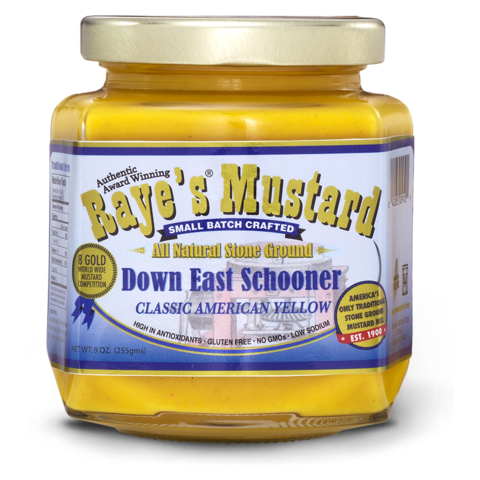
- The best yellow in America, hands-down, is Raye’s Down East Schooner Mustard, a craft yellow at a very reasonable price, from the nation’s oldest maker, circa 1900. Read more about it on our Choicestuff™ Review.
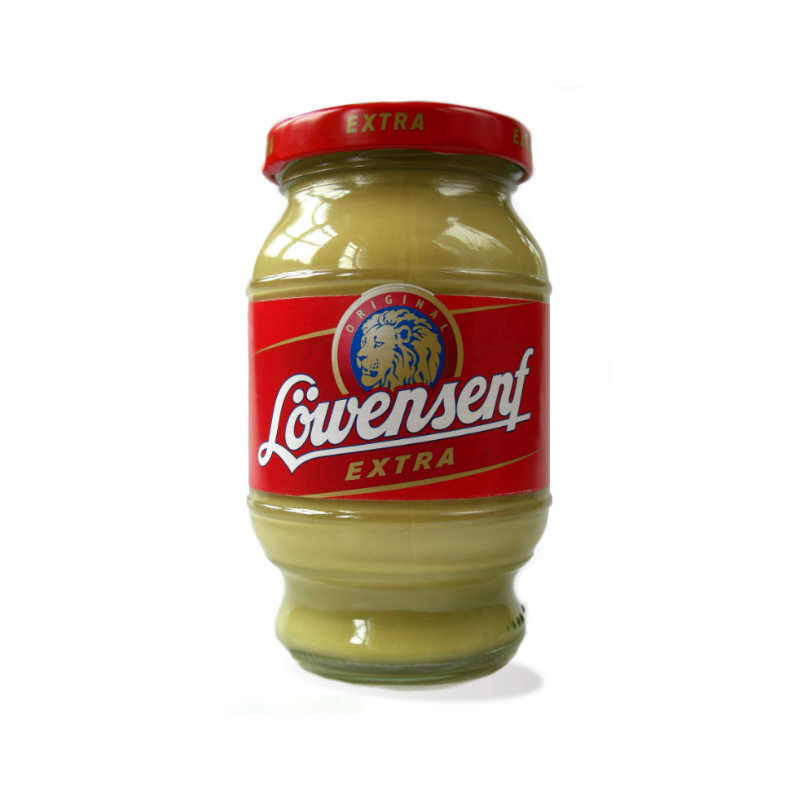
- Anyone who says German food is boring hasn’t tried Löwensenf. In yellow, they make great mustards to suit your spicy strength. Following the Three Bears rule, Extra Hot, Medium, or Mild should be just right.
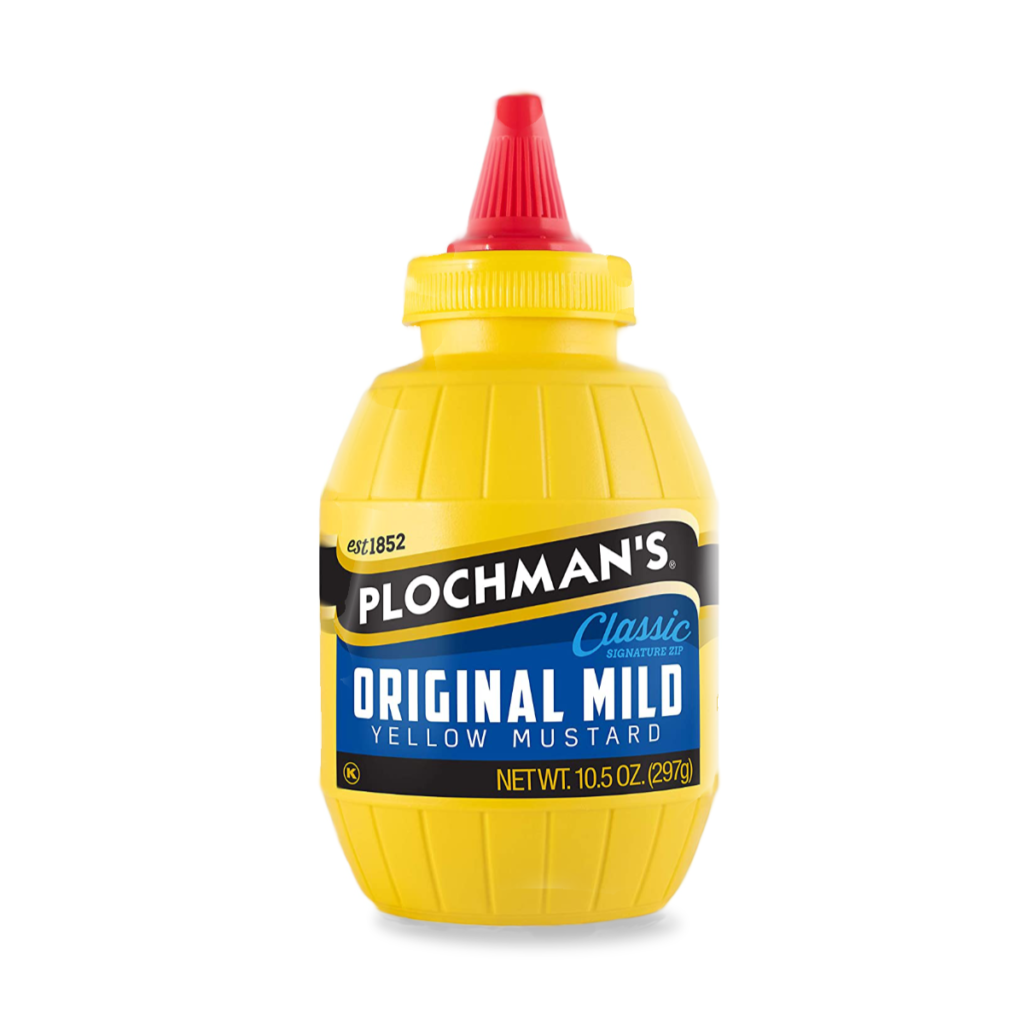
- Of the mass market mustards, Plochman’s Classic uses #1 grade mustard seed, and isn’t full of sugar.. Great consistency, and, for industrial-grade mustard, with a bit more body going for it than French’s.
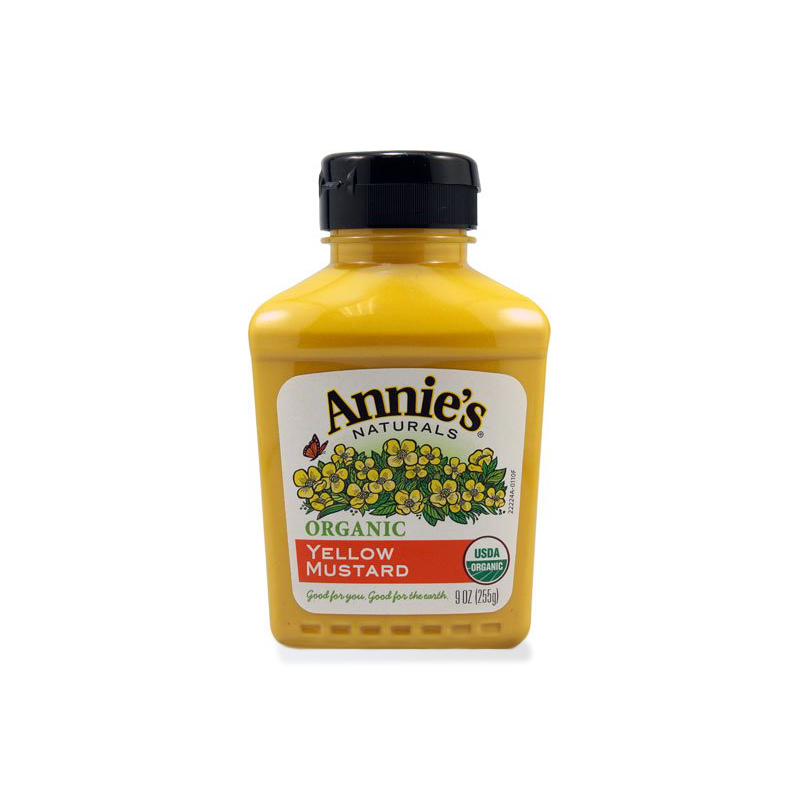
- Show a little love to Annie’s Naturals, even if it is owned these days by General Foods, for keeping it real and organic.
- Any of the organic yellows, house brands for Trader Joe’s, Fresh Market or Whole Foods, which also lack additives, are going to be a win.
Wine Mustards (Dijon)
The term “Dijon” used to refer to mustards made in Dijon, France, but the name got away from them. Now, pretty much any wine mustard now seems to get lumped under the “Dijon” label.
Many of the cheaper “Dijon” brands sub-out the wine for vinegar or citric acid and toss in a lot of sugar. Zut alors!
The overwhelming majority of the Dijon mustard sold in North America comes from Canadian, not French, seed.
Several little “d” “dijon” mustards, including bulk supermarket-grade Maille, and Grey Poupon for North America, are made in Canada. It’s cheaper, as the M in Canadian agriculture is not just Maple. It’s Mustard seed.
There are a couple of mustards from Burgundy’s finest traditions that deserve recognition and use, even if they cost a tad more than your faux-French dijon.
Prepare to have your tastebuds explode with bigger flavor.
Legit Dijon is STRONG, and a little goes a long way.
It comes in smooth, semi-smooth, and stone-ground. I keep the stone-grounds in their own space, as there, the French, Germans and Americans all go more toe-to-toe.
My must-have wine mustard? When I can get it, it’s Moutarde de Charroux.
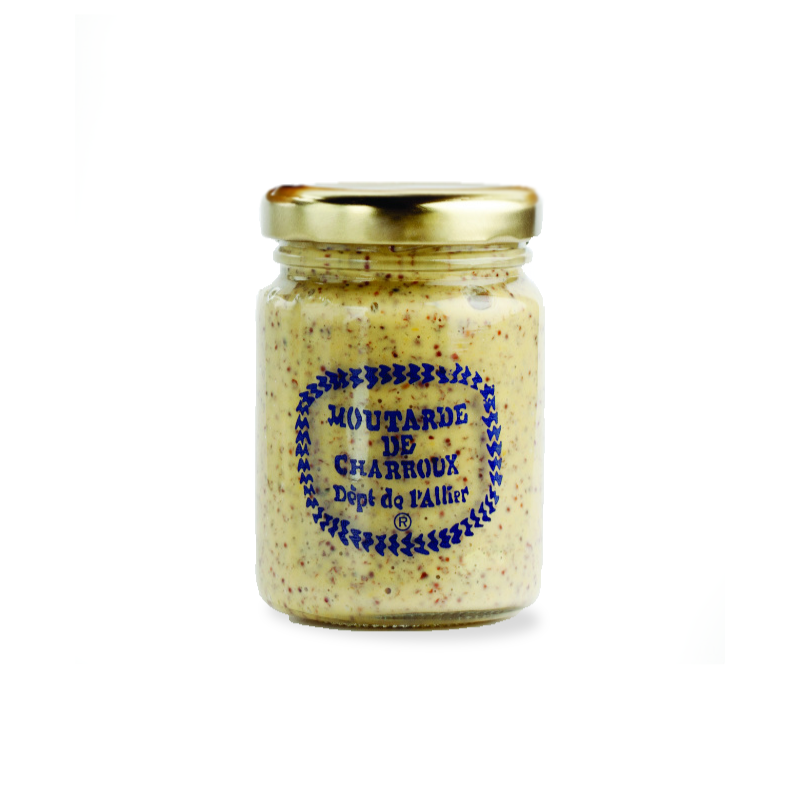
- Moutarde de Charroux If there is a Rolls Royce of mustards, Charroux is it. Ground in a century-old mill, they then add a “verjus” of wine, vinegar, spices and salt. Last, St. Pourçain’s white wine (AOC), is added. If you’re in Europe, lucky EU! You can get it. For the rest of us, it is not readily exported, save at a few smart Francophile shops that know it is like mustard gold bullion. It will be pricey, and unfortunately not a regular staple of your pantry. At least once, though, you should get a small bottle, and work with it. Join the ranks of the Michelin chefs who use it. It is amazing!
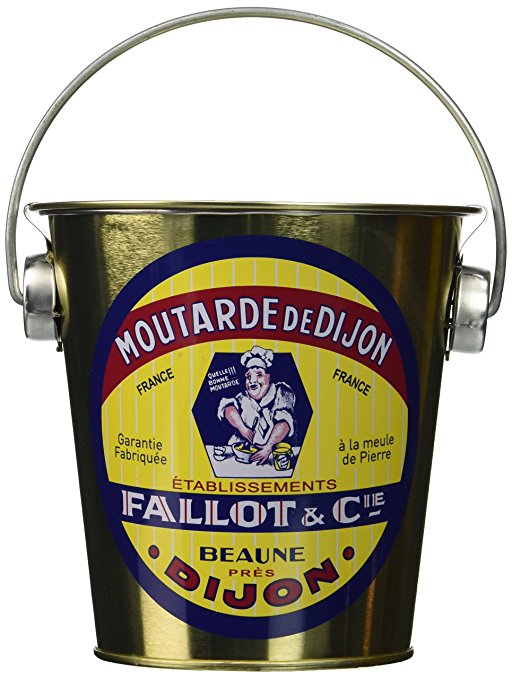
- Edmond Fallot is amazing mustard, real Dijon, with its Burgundy official seal, cute pail to ship the glass jar in, and all. Much more available in the US, its price is comparable to a top quality EVOO or top-of-the-line Parmigiano-Reggiano. If you really want to know what “Dijon” is supposed to taste like, this mustard belongs in your pantry.
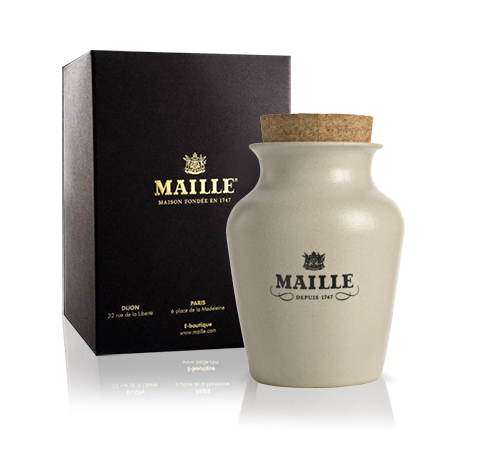
- Maille (Boutique / Web Only) – I’d compare this to a world class French automobile, if only there was one. All Maille products are not created equal. Maille, which began in Marseille, France, in 1723 is, today, a unit of the corporate food conglomerate Unilever.
Their American “Dijon” mustards are made in Canada. They’re loaded with sugar, and have a decidedly different taste from their legit namesake.
For real, old-school Dijon de Maille, if you can’t visit them at one of their boutique stores in New York City, Bordeaux, Paris, Melbourne, or even, wow, Dijon, they do a mail-order that beats supermarket Maille any day of the week. Will you pay a lot more? Count on it. Will it taste worlds better? Oh, yeah.
- Temeraire, still available on the web, although it comes and goes, is another very legit Dijon, where the wine gives a little sharper edge. It has its own flavor thumbprint that I find pleasing. Just hard to find in North America.
- I would be remiss in not taking up for Olivier Napa Valley’s Cognac Mustard, which is so good it should be from France, but since it’s from Napa, it’s French-Once-Removed. Vive California!
Spicy Brown/Deli Mustards
So-called “Deli” mustards are the space where some of the most iconic local and regional brands, which inspire fierce loyalty, live.
Wine mustards are show ponies. Spicy Brown/Deli Mustard are your workhorse, blue-collar, mustards.
French’s dominates the yellow shelf space in North America, but, downtown, on the lower shelves, in the brown, it’s a big free-for-all. There are hundreds of spicy brown/deli mustards in the U.S. alone. Germany brings a few leaders, and dozens of smaller world-class brands to the party, too. So does England, Ireland, Scotland. This is Ground Zero of true mustard mania!
Like the others, they range from whole grain mustards, to a thick paste.
- So I may be reliving my childhood summers at Dodger Stadium, but mass-produced Gulden’s is still one of the best spicy browns around. The largest brand in the category has not wavered in its quality, and it’s a great price usually. If I’m going sinfully American, and doing the dog or I’m making my own beer brats, this is still one of my go-to mustards.
- There are a ton of good beer mustards out there, Kosciusko Beer Mustard from Plochman’s, is a great balance and wonderful on brats, burgers, barbecue, and more.
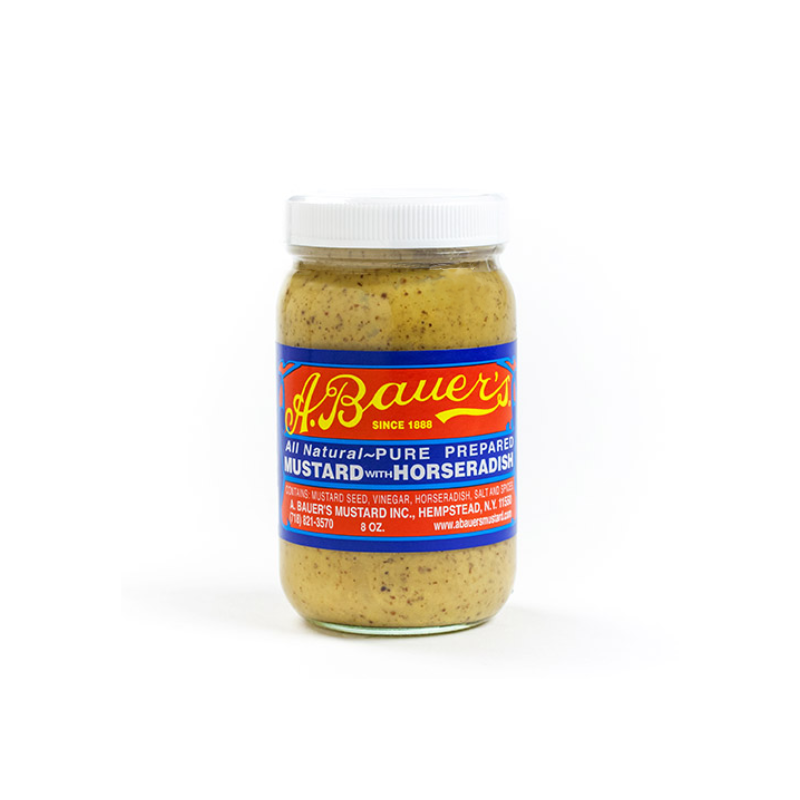
- A. Bauer outta da borough of Queens, now in Hempstead,New York is a horseradish mustard that is amazing not only on its own, but in cocktail sauce, my mayoless New York coleslaw, and many other dishes. You can find it on their website.
- Folks on the North Coast may say it’s the Rock and Roll Hall of Fame, but Cleveland rocks because Bertman Original Ballpark Mustard is legendary spicy brown. Aside from its great taste, it’s steeped in a local mustard war, and stadium controversies, that provoke passionate arguments
- Koops is another quality spicy brown mustard that I like quite a bit. Regional, it has a huge following in Wisconsin, its home state. They’ve upped the product’s A-game quite a bit, in the last couple of years, making their seed sourcing organic/certified. We like the new packaging, too! Watch out Gulden’s. There may be another Big Brown in Town!
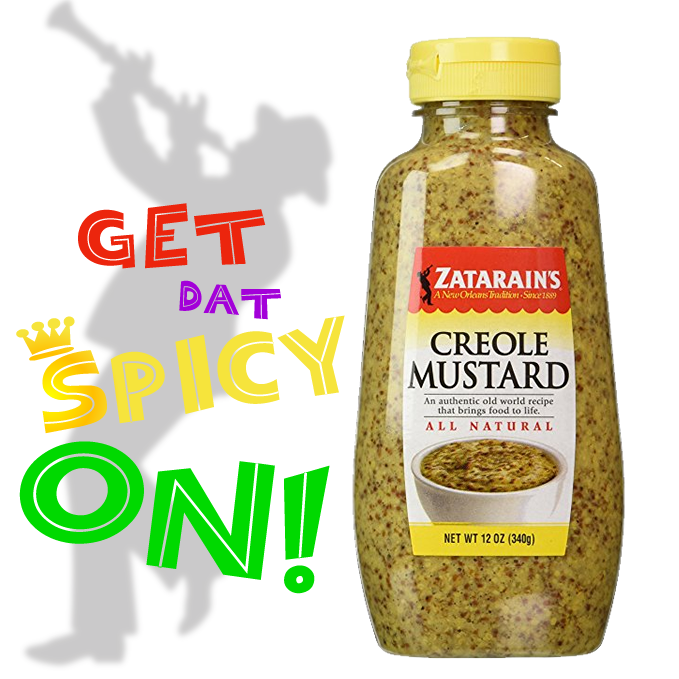
- NOLA essential: Zatarain’s Spicy Creole Mustard. It lets the good times roll in your potato salad, puts the devil into deviled eggs, and has a unique flavor that you don’t find in the other mustards. It’s a grainy mustard, without being gritty. It was one of the first things Emile Zatarain ever concocted to spice up New Orleans! A staple of New Orleans’ finest kitchens.
Stone Ground Mustards
Stone ground mustards cross a lot of categories, but their wonderful texture distinguishes them, for me at least, into their own category, defined by their crunchy coarseness, and sparing “sauce.”
They have their specific uses. They work better in things like potato salad and cole slaws, because they give a little visual pop and a touch of crunch. They’re also great on their own with sausages of any kind, in or out of bun, and, of course, you can’t really do a wonderful charcuterie board without a little and some nice salty cornichon midget pickles.
Here, flavor is a function of what they’re soaked in. A good stone ground starts with a great soak. This is the best one on the planet:
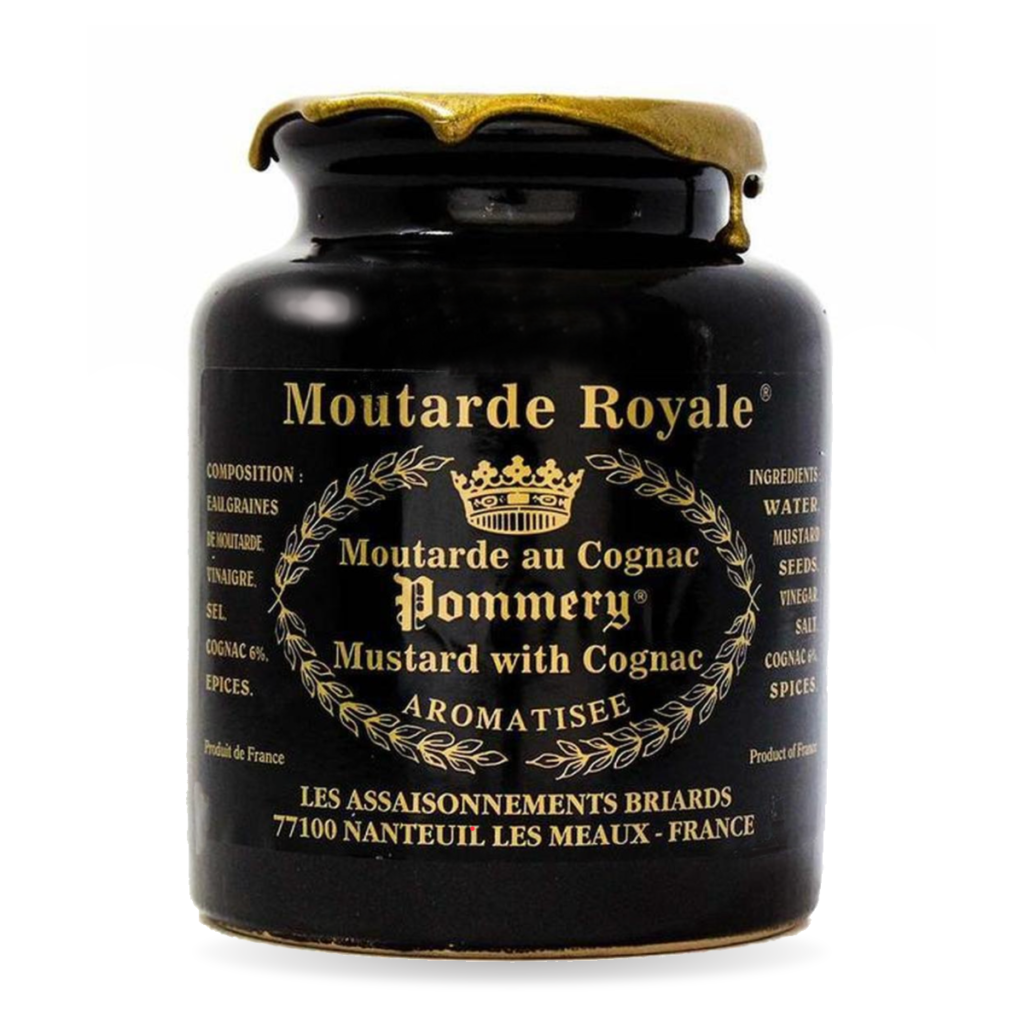
- Cognac mustards are the platinum standard in mustards. Moutarde Royale, by Pommery is the most recognized, and for a reason. It’s really good if you pop it in a little cream for a quick sauce that sends beef into OMG smiles at your table. It’s also a stone-cold, stone ground killer on a charcuterie board, on a rare roast beef, or the accent topper to a maple-glazed Duroc pork chop.
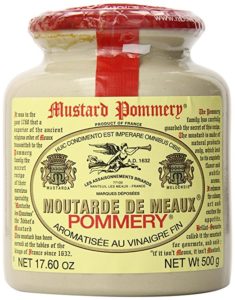
- Of the stone-ground wine mustards, the legit Dijon, Moutarde de Meaux (aka “Pommery“) is the best of the best. Monumental flavor, and a perfect coarse grind of the seeds, along with great french wine vinegar and spices.
- Maille’s stone-ground whole mustard with chardonnay, pumped into crocks, that comes from their boutique stores around the world, or online, is stone-cold perfect. Stone ground can run a bit “dry” or separate easily. Maille’s blend keeps the flavor, and the proportion of liquids-to-seed, balanced harmoniously.
- Tracklement’s in the UK is a relative upstart, only in biz since 1970, but they produce three great stone ground mustards, Original Wiltshire, Robust Wholegrain and French Wholegrain all of which are SUPER (Soopah). You can find them at upscale Soopahmarkets in the U.S. like Whole Foods.
- If you like your stone ground a little soupier, Inglehoffer may be your pick. They blend less seed and more sauce. It’s a mass market, but an acceptable one.
- Wilkin & Sons Tiptree English Wholegrain Mustard is a name so large they almost need a second bottle, but, the upper-crust jam maker puts out a pretty credible mustard, albeit a bit pricey for its size. If you’re looking for a nice serving mustard that looks elegant on the table, it will do ra-ther nicely.
Mustard Seeds
One of the best ways to incorporate mustard into your own recipes is to have quality mustard seeds on hand. You can also buy a bigger batch and try your hand at your own homemade mustard! They’re a must-have if you’re making my kosher pickles, or for a ton of other pickling recipes. Ground with other seeds and peppers, they’re the Ba-BING in the BBQ sauce, and they can even, in small quantities, put a little zip into your ziti!

Best way to remember what does what, since mustard seeds don’t have that much smell to follow your nose, is this basic rule: Yellow is mellow. Brown takes it downtown and black is a spicy attack!
Mustard Oil

You may wonder why I’m recommending TEZ Mustard Oil as a cooking oil when the American label plastered over its nutrition information says “For External Use Only.”
Mustard oil is a staple cooking oil in India. Here, in America, it became sidelined by an old Food and Drug Administration (FDA_ report with a dubious study from years ago about heart health, and by Big Mustard, the manufacturers who don’t want to compete with oil manufacturers, because oil consumes a lot more of the seed, and raises prices.
The fact that millions of people consume it every day, and in limited quantities, and more current studies show that it helps strengthen red blood cells. and lower bad cholesterol, should help sway you. Pro chefs have been using it for a long time. Americans also consume a ton of the oil by way of their daily doses of yellow on this and that, because the oil is very much a part of the condiment.
Not convinced yet?
The current Food and Drug Administration report from 2015 shows mustard oil on the GRAS (Generally Regarded As Safe) list and states:
“The available information shows that the characteristic isothiocyanates, other known constituents, and decomposition products of the essential oils of both mustards, have low orders of oral toxicity in experimental animals. Further, there is no reported evidence that orally administered doses of these constituents are carcinogenic, teratogenic, or mutagenic… There is no evidence in the available information on allyl isothiocyanate, p-hydroxybenzyl isothiocyanate, and brown and yellow mustard that demonstrates, or suggests reasonable grounds to suspect, a hazard to the public when they are used at levels that are now current or that might reasonably be expected in the future.”
TEZ is mustard oil made from black mustard seed, the more pungent and intense flavor that people describe as the heat that burns your nose in spicy mustard.
Like sesame oil, it is very strong. In certain parts of India they fry meats and vegetables with it. Outside of India, I would recommend it highly as you use sesame oil: Sparingly.
It provides a lot of flavor to salad dressings, and any recipe that cries out for a little mustard love!
Mustard Greens
When I was in search of mustard greens, it used to require a trip to neighborhood markets that catered better to predominantly African-American, or Asian neighborhoods. The rest of us, sadly, have been a little M-G stoopid. Until someone slapped a new label for the health-crazed onto them:
Superfood.
While you can’t find them at every supermarket, most of the “healthier” stores like Whole Foods, Fresh Market, or Sprouts have at least one kind of fresh mustard greens. There are a whole bunch of varieties though, which offer your family some great meals!
If you can’t find a supplier, you might have to grow your own. It doesn’t take much of a green thumb to grow them! Johnny’s Seeds is my go-to for mustard seeds for planting, and all kinds of other seeds as well in at my H2OhGrows hydroponics project.
Southern Giant Curled
Probably the most common mustard greens, available at markets in the South, is Southern Giant Curled. It has a mild mustard taste that is tasty cooked, or adds a nice bite to salads much in the way that rocket arugula does. (Seeds)
Red Giant
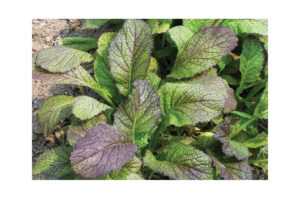
Pretty for salads or as a nice base for a chicken or fish dish needing a bed of both color and pop, Red Giant is your leaf. (Seeds) Much less common at markets, you may be growing your own here.
Golden Frills
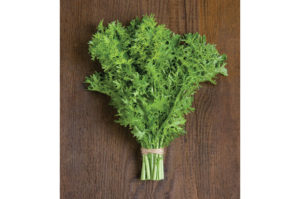
Often seen in mixed salad greens bags, Golden Frills poses as a lettuce, but it really is a nice, spicy mustard green with good mouthfeel. It’s a great accent in a frisee salad with a poached egg and crisped bacon lardons! (Seeds)
Red Splendor
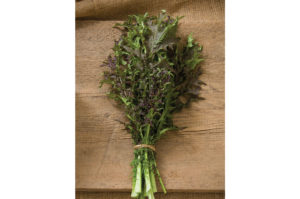
Another more exotic-looking mustard green, pretty easy to grow hydroponically, Red Splendor is both spicy, and exotic looking. Add to a salad, or tear up a few leaves and throw it into patatas bravas or fritas to add a little visual interest and mustardy pop! (Seeds)
Suehlihung
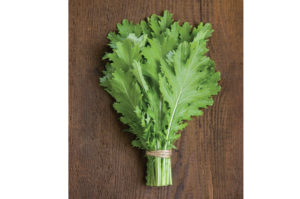
Again something I never see in stores, but occasionally at a farmer’s market, is Suehlihung (Soo-lee-hung) which means “Green in the Snow” because it’s an early harvest crop from Southern China. It is easier to grow yourself if you remember to chill the water that feeds it. Harvest both the micro greens as well as the baby leaves. The adult leaves are AOK too, but the baby leaves in particular are nice as a garnish when doing up a mustard sauced salmon, or adding a little spice/garnish to the top of a good winter squash soup. Sell or trade what you don’t use! (Seeds)
Amara
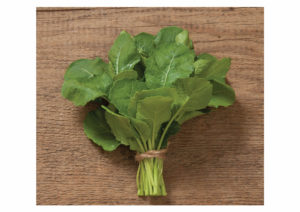
If you’re cooking African dishes (See the amazing book The Soul of a New Cuisine by Marcus Samuelsson for ideas) that call for mustard greens, chances are this is the one that they’re talking about. It is a mustard, you can share with your Ethiopian friends, even though they call it kale. Amara has more aliases than an HBO mob boss: Highland Kale; Abyssinian Mustard; Texsel Greens. They have a BIG flavor that is awesome in salads and hot dishes like Peanut Soup with Mustard Greens or Mustard Greens with Fish and Shrimp! (Seeds)
Final Words
Wow! You made it all the way to the end! You just earned your Internet food geek super-merit badge!
That’s probably more than you ever thought you might read about in your whole life on mustard.
In writing this, I found literally thousands of pages, in books, on dozens of websites, tips from passionate bloggers, and thousands of small companies that have put so many hours into telling tales of its history, or like beer’s “micro brew” movement, blazing new trails in the creation of the 21st century’s definitive recipes, and condiments
Mustard, when used in very small bits, has transformed my improvisational arts. It’s the pop in vinaigrettes. It’s the ooh in my house-cured hickory bacon. The quiet pungency in my Chinese-style barbecue spareribs, and more. The greens, and the oil, are nice balancing touches to your cuisine that replace cheap fats, and oils, with something interesting, and tasty.
Explore them, beyond hot dogs, and burgers, and you’ll find what I have: They make your toughest audience, your family, really happy!

